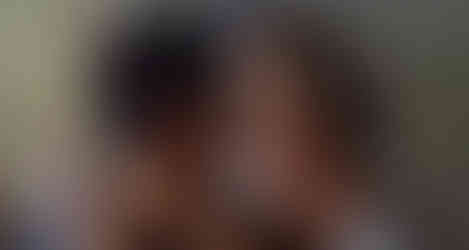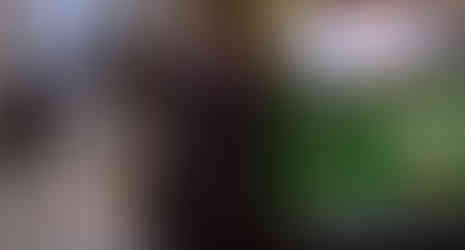4K ULTRA HD REVIEW / HDR SCREENSHOTS
Cary Grant stars as New York advertising executive Roger Thornhill, who finds himself being chased by a crop duster across a barren landscape near Chicago. Eva Marie Saint stars as love interest Eve Kendall.
(Click an image to scroll the larger versions)
“NORTH BY NORTHWEST: 65th ANNIVERSARY EDITION”
4K Ultra HD; 1959; Not Rated; Digital copy via Amazon Video, Apple TV, Fandango Home, Movies Anywhere, YouTube
Best extra: The 60-minute documentary, “The Master’s Touch,” features comments from top directors, who provide insights into the career of the Master of Suspense.
AFTER HOLDING onto a slot on the top Blu-ray must-watch list for over 15 years, Hitchcock’s spy thriller starring Cary Grant, Eva Marie Saint, and James Mason has achieved the same status on the new anniversary 4K Ultra HD.
The update uses the same technology behind the spectacular 4K releases of “The Wizard of Oz” (1939) and “The Fugitive” (1993), both sourced from 8K scans of the original camera negatives.
This time post-production house Motion Picture Imaging scanned the original “NBNW” large-format VistaVision negative (1.85:1 aspect ratio) at 13K and restored it at 6.5K. Still, they faced unique challenges, “With VistaVision, two frames make up the one image, and you get what I call Vista flicker,” colorist Sheri Eisenberg told IndieWire.com. Each frame was “aging in its own way,” with extreme fading in the blue-yellow channel.
(1) Graphic designer Saul Bass provides the opening credits. “North by Northwest” premiered in Chicago on July 9, 1959. (2) Hitchcock’s trademark cameo. (3&4) Advertising executive Roger Thornhill (Cary Grant) gives instructions to his assistant Maggie (Doreen Lang) while heading to a lunch meeting. (5) Two errand boys with guns, Licht (Robert Ellenstein) and Valerian (Adam Williams) think Thornhill is George Kaplan. They escort him to the private home of Lester Townsend on Long Island. (6) James Mason plays suave foreign agent Phillip Vandamm. (7) Thornhill denies being Kaplan; they force him to drink a bottle of bourbon and place him behind the wheel of a car.
VIDEO
The on-screen 4K results are terrific, with a noticeable uptick in clarity and visual depth compared to the highly praised Blu-ray of 2009. The “NBNW” negative is double the size of a traditional 35mm (4 perf) film that moves through the camera vertically. VistaVision film stock moves horizontally (8 perf), creating a much larger negative. The film grain is compact, with a natural texture. Only during one short scene does the grain nearly disappear in a South Dakota forest; it was actually filmed on a soundstage where Hitchcock felt the most comfortable controlling the environment.
A nice surprise, all of the composite fade shots are without that softer, second-generation look that plagues most 4K restorations. Fades were more likely digitally assembled using the raw footage, or by using the larger negative to disguise any shortcomings. Still, in Hitchcock’s trademark background matte paintings, which are composites, the resolution drops a notch from an overhead view when Cary Grant (Roger Thornhill) is inserted into the painting running from the United Nations Building, and when Grant and Marie Saint try to escape during the Mount Rushmore finale. The U.S. Department of Interior feared damage to the monument, so Hitchcock had a 30-by-150-foot replica built of the four presidents on an MGM soundstage.
HDR10 grading provides a warm palette while keeping facial toning on the natural side. Peak brightness hits 1788 nits and averages 120 nits. Everything was encoded onto a 100 GB disc. The video bitrate consistently runs from 50 Megabits per second to 90 Mbps.
AUDIO
Warner produces a new Dolby Atmos soundtrack, pushing Bernard Herrmann’s (“Psycho,” “Vertigo,” “Taxi Driver”) iconic score around the room and to height speakers. The bass response has been enhanced, while the dialogue is still front and centered. Warner also provides the original three-channel Theatrical soundtrack.
(1) Roger and his mother Clara Thornhill (Jessica Royce Landis) return to The Plaza Hotel to look for George Kaplan themselves. (2&3) Next, Roger goes to the United Nations Building to find Lester Townsend, but Townsend is killed and everyone assumes Roger is the killer. He runs from the building to a waiting taxi with one of Hitchcock’s matte painting shots. (4&5) He boards a train to Chicago and meets Eve Kendall (Eva Marie Saint).
EXTRAS
The late director Curtis Hanson (“L.A. Confidential”) said it best about Hitchcock during “The Master’s Touch” documentary. “You could watch a scene from any of his movies and immediately know that only he could have directed it.”
Hitchcock has produced some of cinema’s most memorable scenes and sequences during his six-decade career. How about that shower scene in “Psycho” (1961); the onscreen kiss, lasting 2 minutes and 43 seconds between Cary Grant and Ingrid Bergman in “Notorious” (1946); the attacking crows on the playground in “The Birds” (1963); and the crop duster chasing Roger Thornhill across a barren landscape in “North by Northwest.”
Thornhill is a New York City advertising executive, mistaken for a nonexistent spy and kidnapped by enemy agents. Before fleeing across the country, he becomes a suspect in the murder of a U.N. diplomat. He then meets the stunning Eve Kendall on a passenger train heading toward Chicago. Sparks are bound to happen.
Hitchcock provides a number of interview clips during the documentary, giving us a glimpse into the master’s vision. “My instincts are to go first for the visuals,” he says.
Crop Duster Chase
A 25-minute making-of documentary “One for the Ages” breaks the production into sections: Real Suspense, Facing Our Fears, Blondes, The Perfect Image, A Confession, Glamour, A Macguffin, A Symphony of Sound, and Ghosts from the Past.
Another top bonus is screenwriter Ernest Lehman’s commentary. It’s like a two-hour confession with reflections on every single step of the filmmaking process from finding the original idea, selling it to Hitchcock, a cross-country trip for research, weeks of writer’s block, fear of watching a sneak preview, ripping into a film critic, and the shock of losing the Oscar for Best Writing to the romantic fluff piece, “Pillow Talk.”
Lehman also credits Herrmann for introducing him to the Master. “I wanted to make the Hitchcock picture to end all Hitchcock pictures … something with wit, sophistication, glamour, action, and change of locale,” he says.
Hitchcock and Lehman brainstormed for weeks, trying to develop the “wrong man” plot. Finally, Hitch said, “What about a chase scene across the presidential faces on Mount Rushmore?”
Don’t miss this American treasure, “One of Hitch’s top five movies,” says the late director William Friedkin (“The French Connection,” “The Exorcist”).
— Bill Kelley III, High-Def Watch producer





















































May not always be believable but always entertaining, and the VistaVision IB Technicolor is looking good.